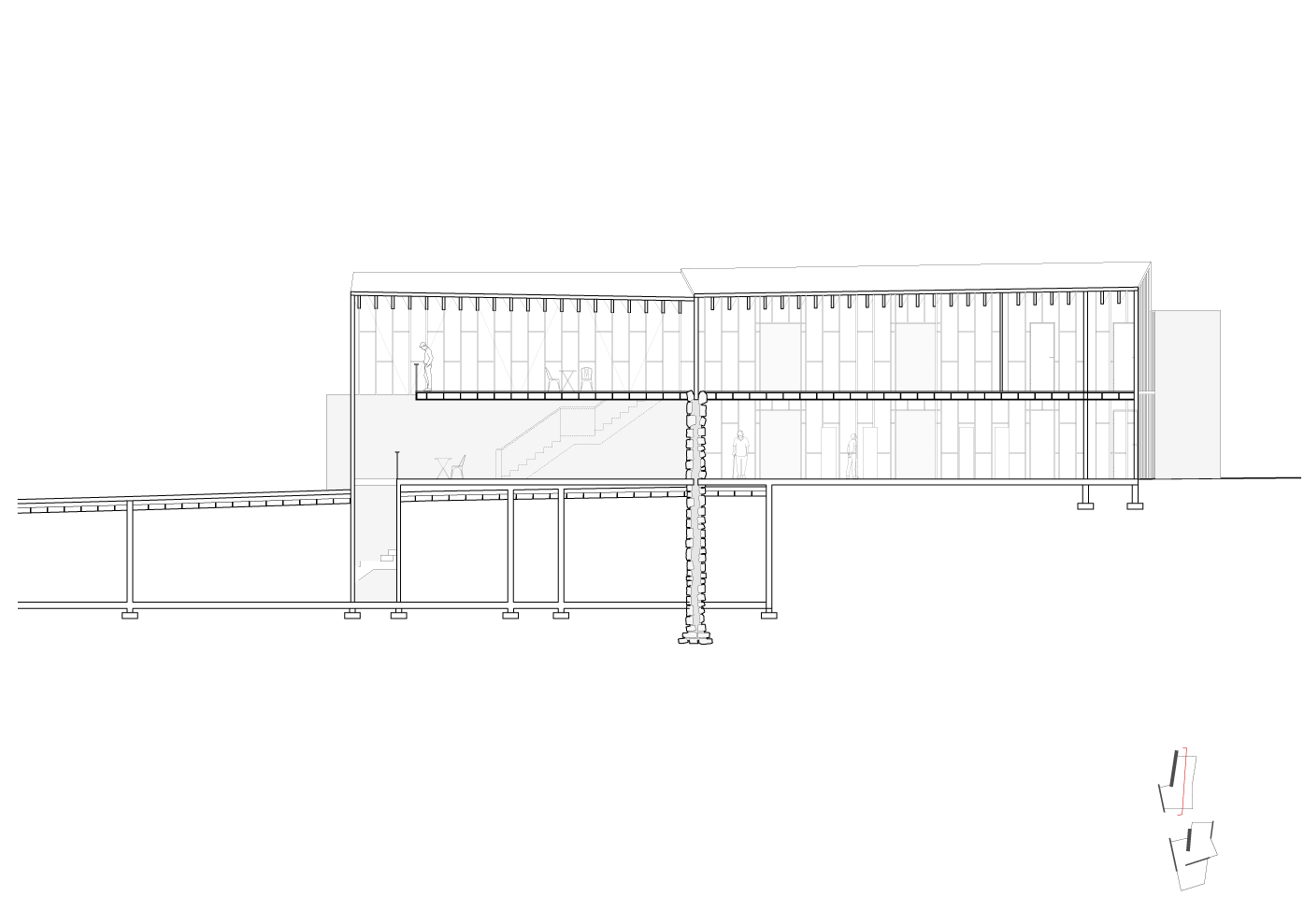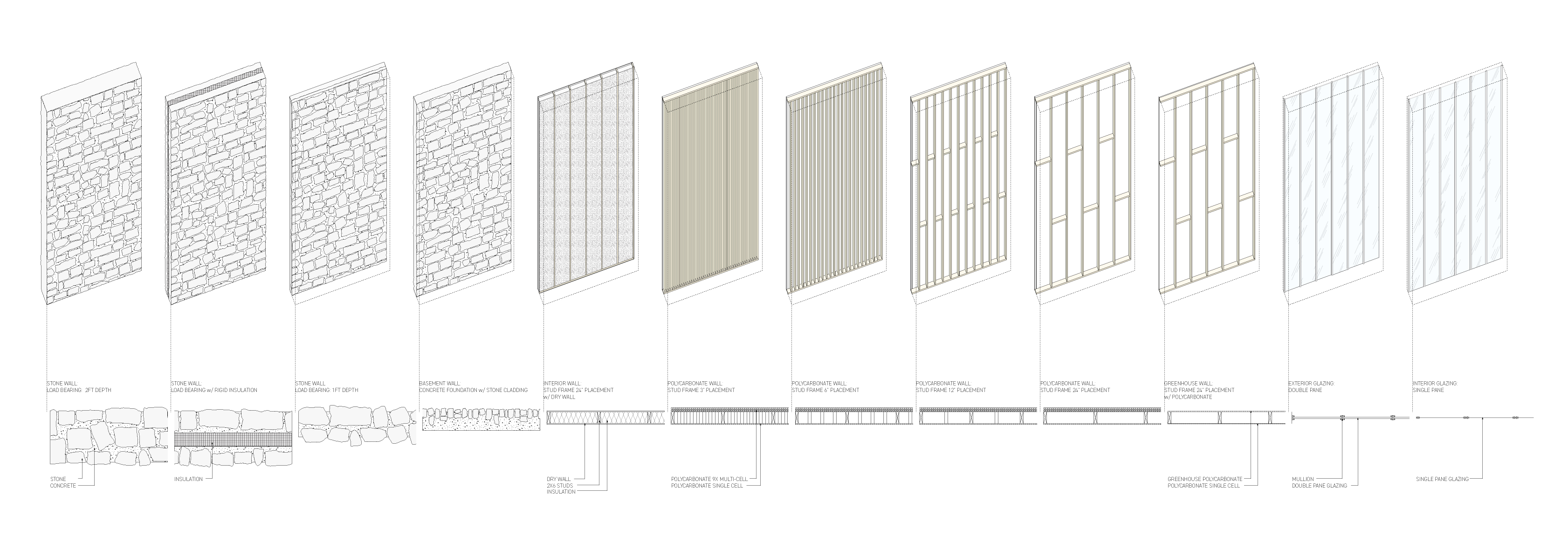Growing and Harvesting Center
MIT, Core III
Group Partner: Alena Titova
Instructor: J Jih, Sheila Kennedy, Rami el-Samahy
2021
Coastal Maine currently relies on ocean farming as a main point of industry. But as temperatures are rising, and sea life populations are dwindling, we must think the future of aquatic farming. Seaweed, an overlooked aquatic plant could be our answer. This project is a seaweed processing facility and community center. It encourages food cultivation and community engagement, honoring old tradition and welcoming the new.
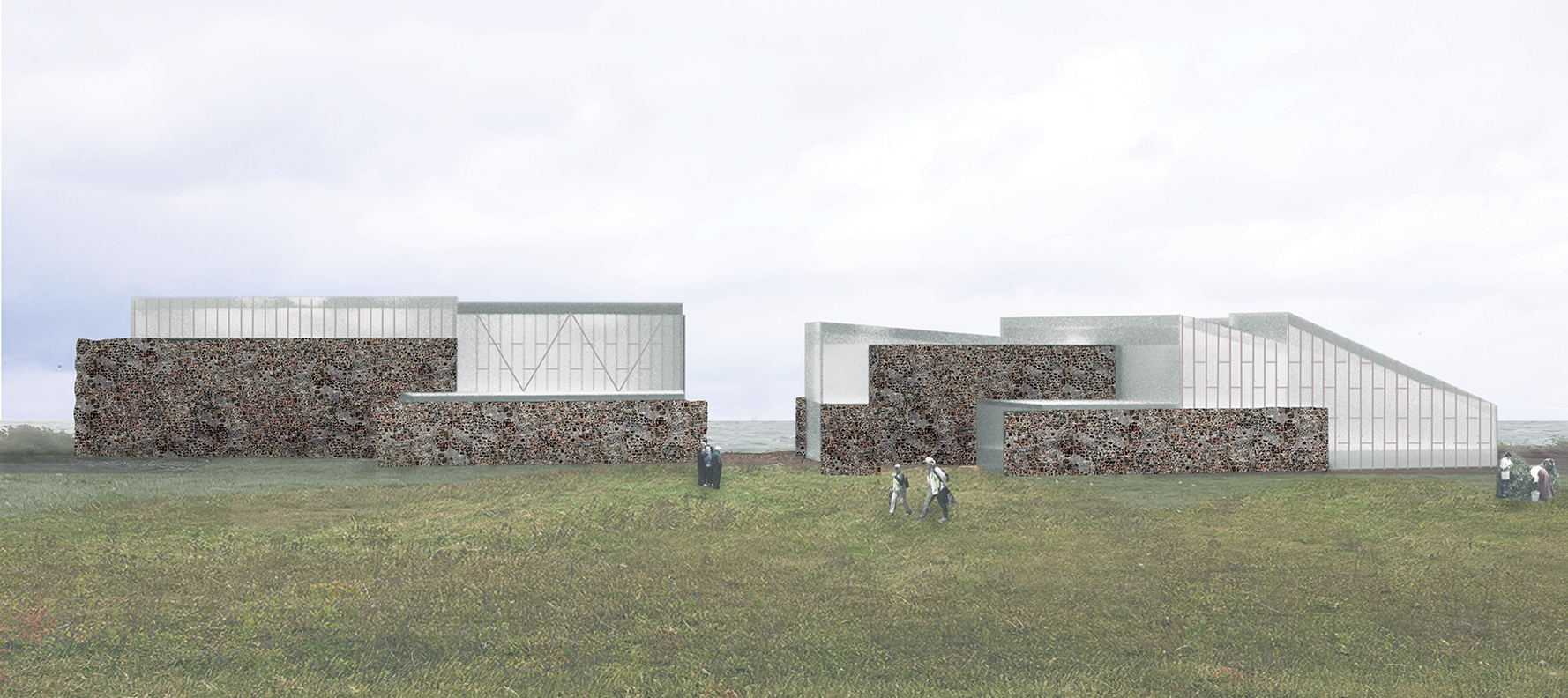
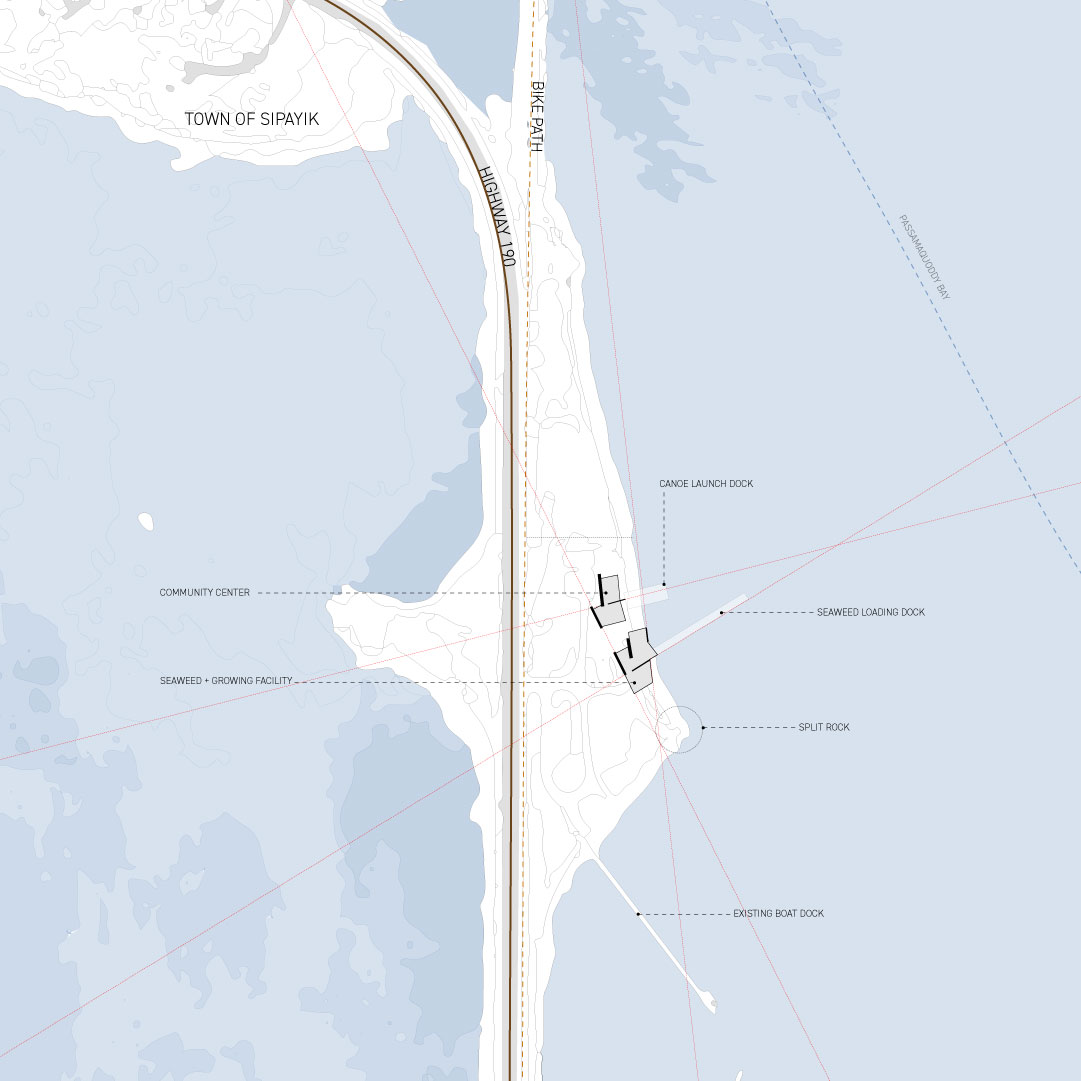
Sipayik (Pleasant Point), located on the northern coast of Maine lies next to the Bay of Fundy. A body of water which holds the borderline between the U.S. and Novia Scotia. This body of water is known for its extreme range of high/low tide lines.
The site, just south of town center is an islet of land with a highway directly cutting through. The land holds a sacred landmark to the Passamaquoddy tribe, Split Rock.
Using two material systems: load bearing stone and stud frame timber. The buildings utilize each systems’ material properties: where the stone creates moments of solidity, the stud frame becomes the nimble parts between. At the same time, both systems are pushed beyond their conventional boundaries.
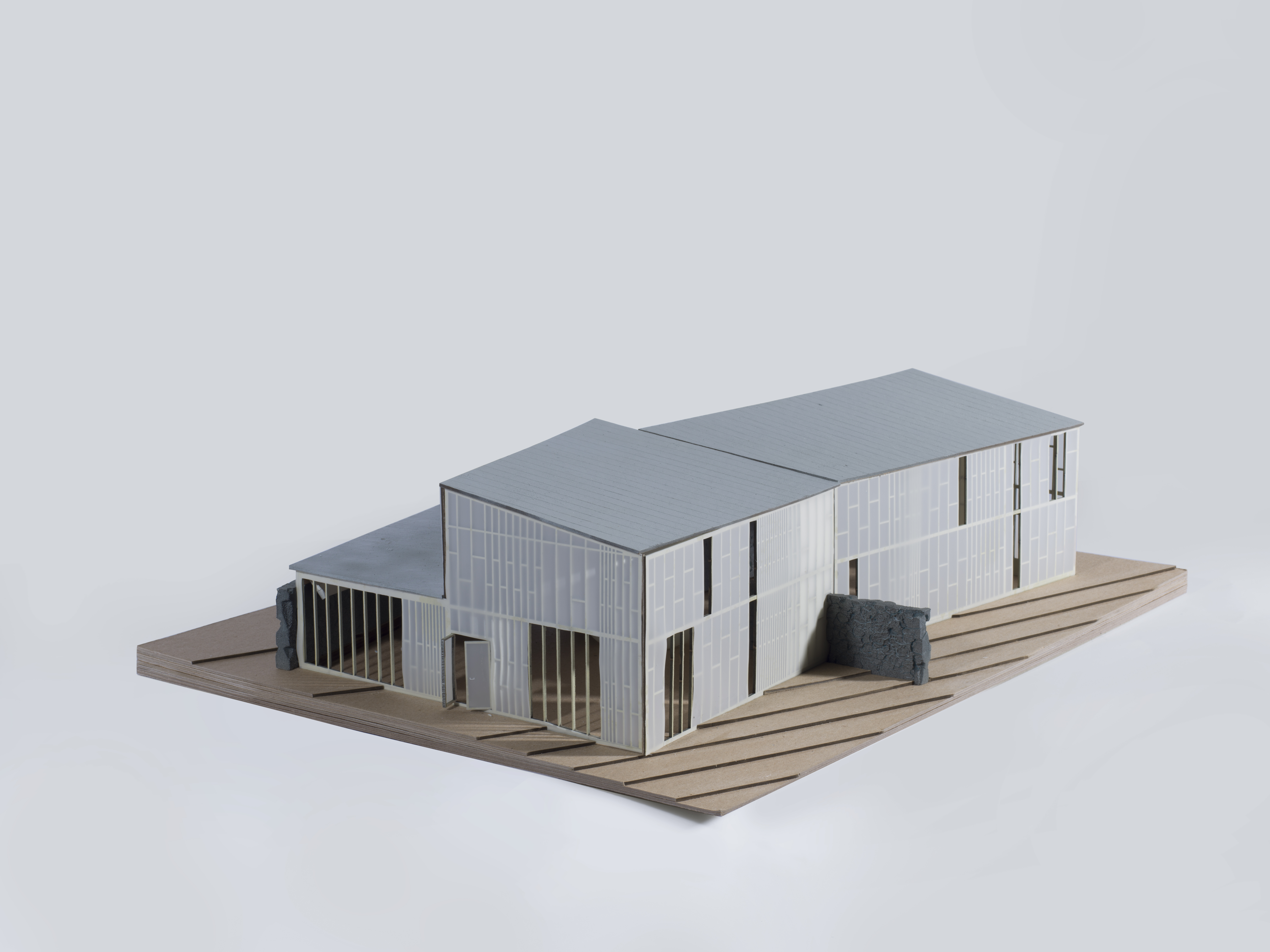
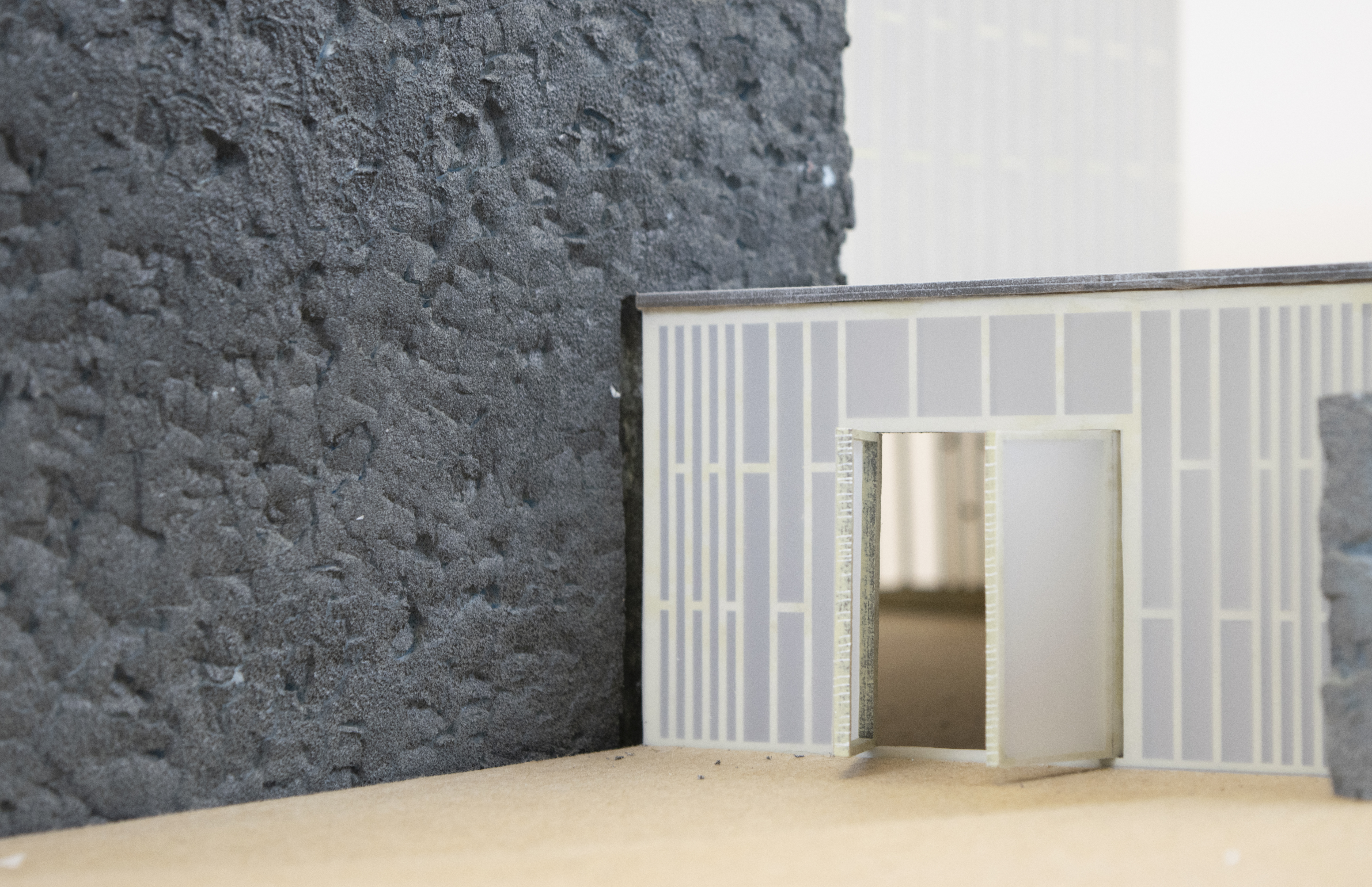

Construction System
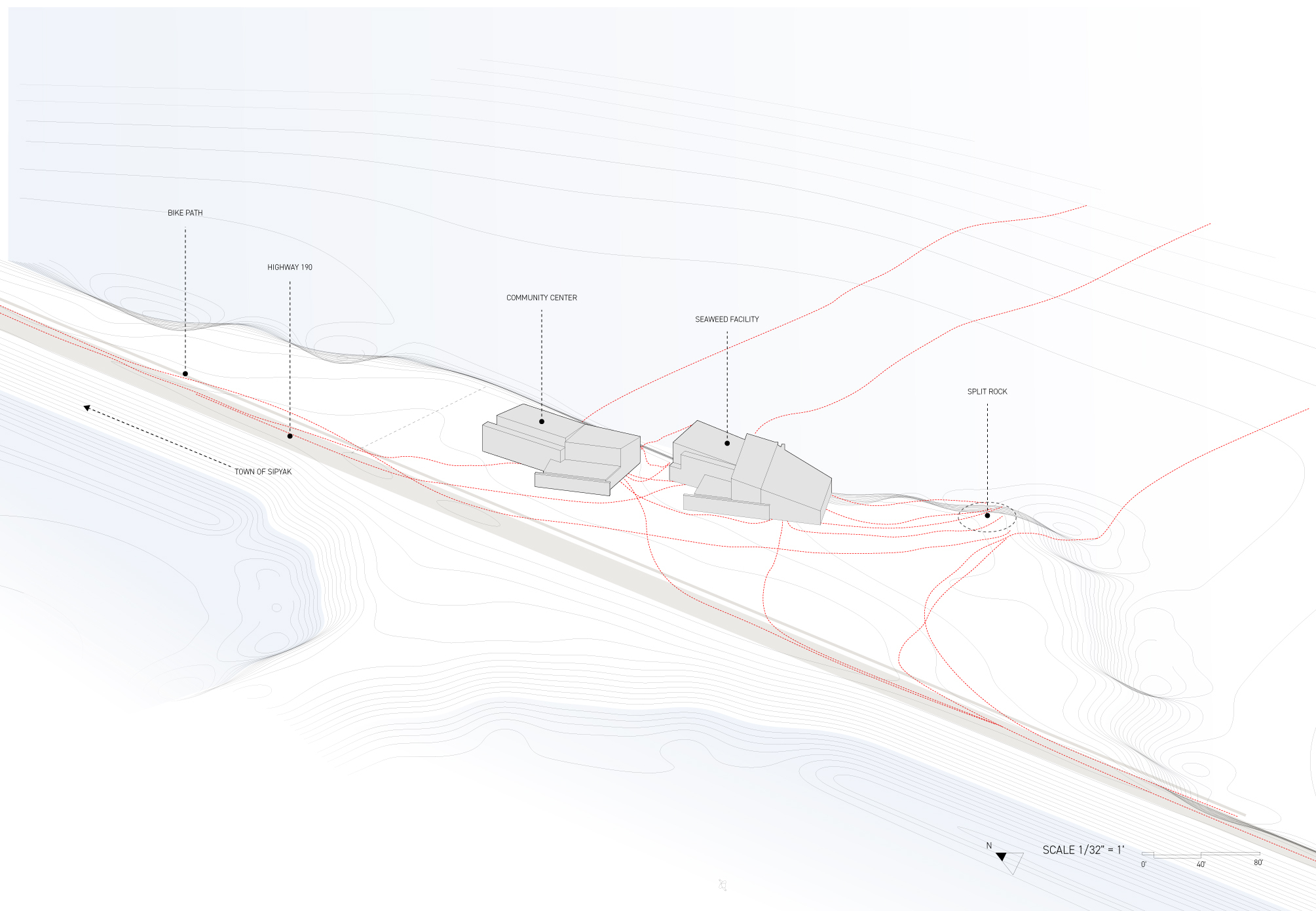
Site Map
From the outside, the program is divided into two buildings. The northern building is a food co-op, kitchen/dining and a community center, where the south building is the seaweed processing facility, greenhouse and educational center.
Under the shared courtyard is an underground level, connecting the two buildings. It acts as a path of circulation, ocean dock access and seaweed storage. A processional staircase is the direct connection between the two spaces.


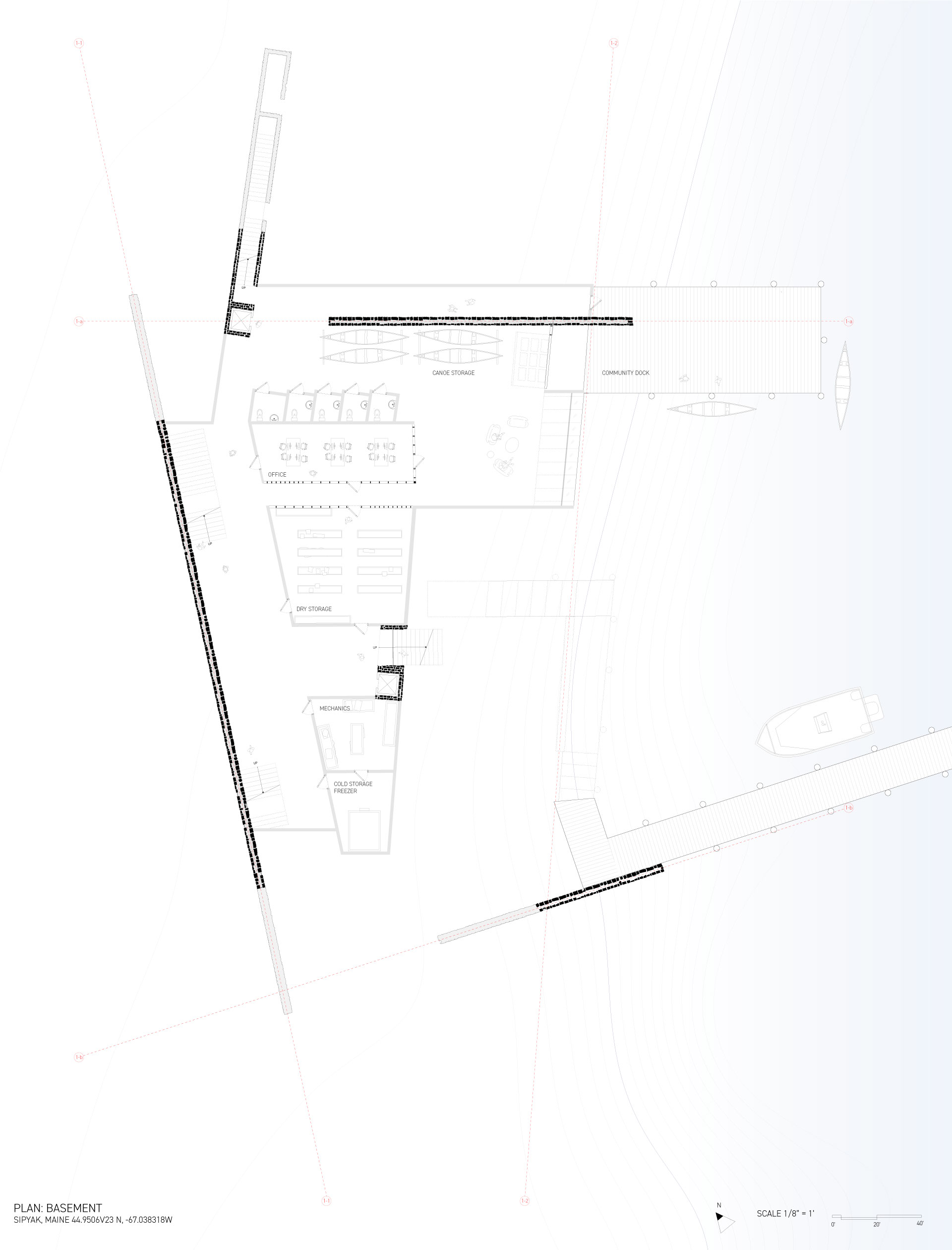
Plan: Basement
![]() Plan: Ground Floor
Plan: Ground Floor
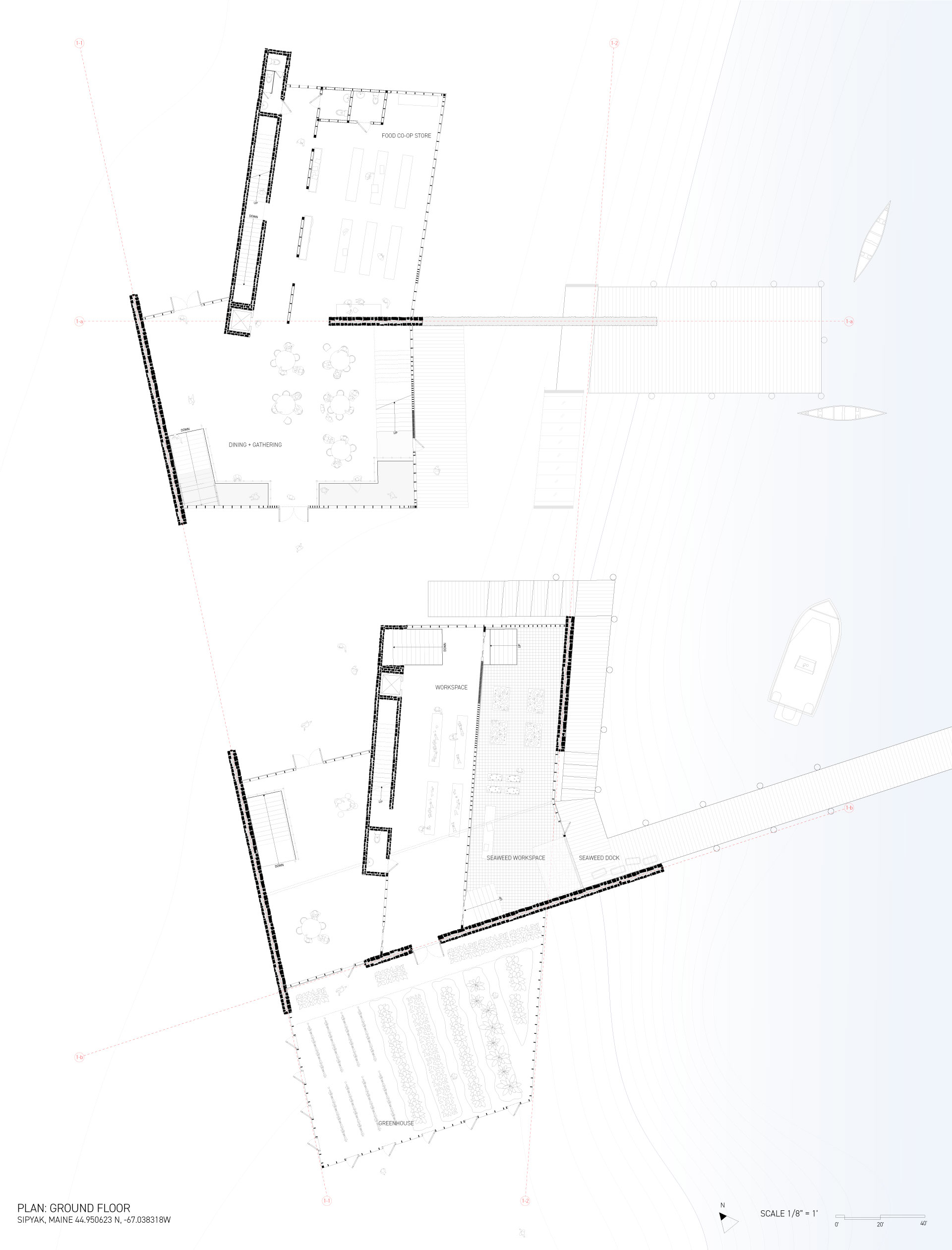 Plan: Ground Floor
Plan: Ground FloorPlan: Second Floor
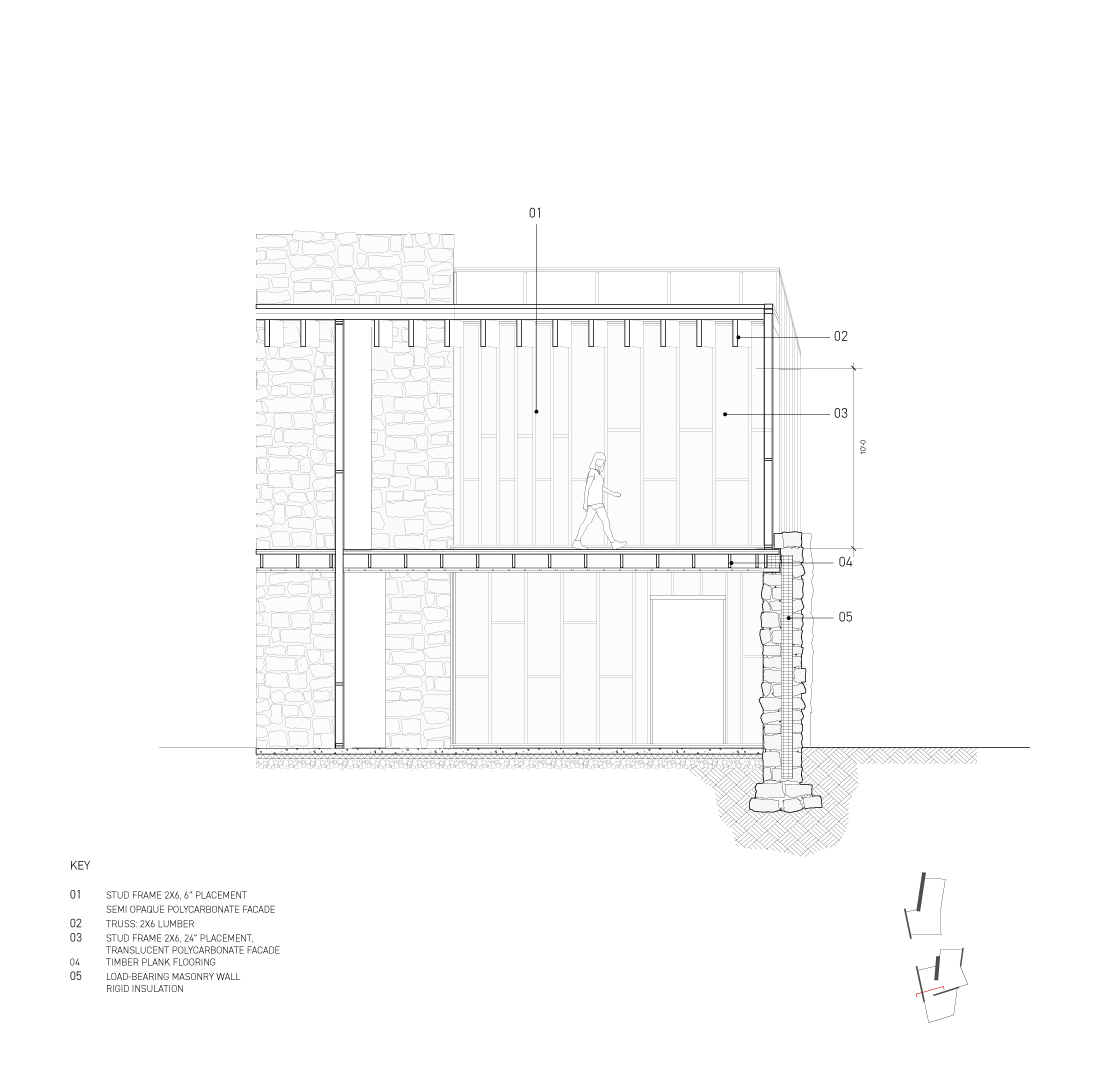
Section Detail: Greenhouse
